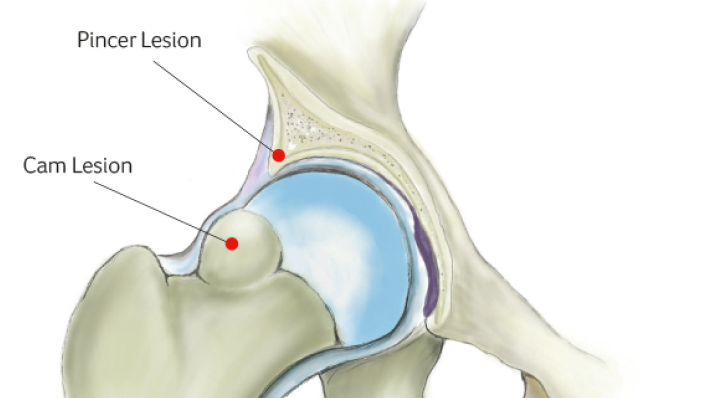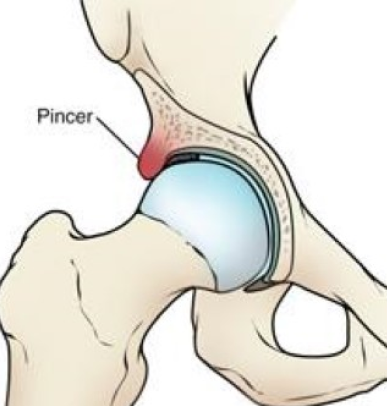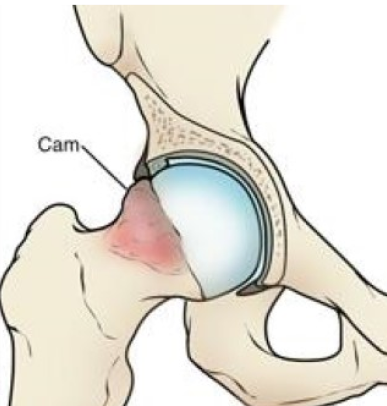Femoroacetabular Impingement (FAI)

Femoroacetabular Impingement (FAI)
Are you struggling with persistent hip pain and looking for the most advanced solution?
At Tarabichi Joint Care, we offer specialized treatments for Femoroacetabular Impingement (FAI), utilizing cutting-edge technology and the expertise of our renowned hip surgeon Dubai.
FAI is a condition in which abnormal hip bone structure causes pain and limits mobility. However, with our precision-focused treatment options, including minimally invasive techniques, you can experience greater accuracy, Enhanced Recovery, and improved long-term outcomes.
Femoroacetabular Impingement (FAI)
Anatomy of Hip
The hip joint is a ball-and-socket joint.
The socket is formed by the acetabulum, which is part of the large pelvic bone, while the ball component is the femoral head, the upper end of the femur (thighbone).
Covering both the ball and socket surface is a smooth layer of articular cartilage, which provides a low-friction surface, enabling the bones to glide easily during movement.
Surrounding the acetabulum is a strong ring of fibrocartilage called the labrum, which acts like a gasket around the socket. This labral ring creates a tight seal, adding stability to the joint.
Femoroacetabular Impingement Causes
FAI happens when the hip bones do not develop normally during childhood, leading to deformities such as cam or pincer bone spurs. These irregular shapes can cause joint damage and pain over time. When hip bones are abnormally shaped, there is little that can be done to prevent FAI.
It is not known how many individuals have FAI. Many individuals may lead long, active lives with FAI without experiencing any issues. However, symptoms often indicate damage to the cartilage, and the condition is likely to progress.
Athletic individuals who use their hip joints more intensely may start to experience symptoms sooner than those who are less active. However, exercise itself does not cause FAI.
Types of Femoroacetabular Impingement

Cam Impingement
Occurs when the femoral head (the ball of the thigh bone) is not perfectly round, causing it to jam against the acetabulum (hip socket) during movement. The misshapen femoral head cannot rotate smoothly within the socket, increasing friction.

Pincer Impingement
This type of impingement occurs when extra bone extends beyond the normal rim of the acetabulum. This excessive coverage pinches the femoral head against the acetabulum, compressing the labrum and causing pain.

Combined Impingement
This means both the pincer and cam types are present.
Symptoms of Femoroacetabular Impingement
The most common symptoms of FAI include:
- Pain
- Stiffness and restricted movement
- Limping
Pain typically occurs in the groin area, although it may radiate to the outer hip. Movements such as turning, twisting, and squatting may trigger a sharp, stabbing sensation, while at other times, the discomfort may present as a dull ache.
Femoroacetabular Impingement Treatment
- Activity Changes: You may be first recommended to adjust your daily routine and avoid activities that trigger symptoms.
- Medications: Pain medications like ibuprofen can be prescribed to help reduce pain and inflammation.
- Physical Therapy: Targeted exercises can improve the hip's range of motion and strengthen the surrounding hip muscles, helping to relieve stress on the injured labrum or cartilage.
- Hip Arthroscopy Dubai: Arthroscopic procedures are minimally invasive surgeries conducted through small incisions using specialized instruments. Our surgeon uses a small camera, called an arthroscope to view the inside of the hip. During arthroscopy, our surgeon can repair or remove damaged tissue from the labrum and articular cartilage, as well as trim the bony rim of the acetabulum. They may shave down the bump on the femoral head.
Start Your Journey at Tarabichi Joint Care
Take the first step toward pain-free living with Femoroacetabular Impingement treatment at Tarabichi Joint Care. Our skilled hip surgeon Dubai is dedicated to providing personalized care for FAI, ensuring enhanced recovery and superior results.
FAQ’S
Treatment for hip impingement typically includes physical therapy, anti-inflammatory medications, and activity modification. Hip arthroscopy may be performed if conservative methods fail to reshape the bones and repair damaged tissues.
Possible complications from arthroscopy for FAI include infection, bleeding, nerve injury, blood clots, joint stiffness, and incomplete symptom relief. In some cases, further surgeries may be necessary if symptoms persist or worsen.
Preparation documents for FAI surgery typically include medical history, imaging results (X-rays, MRIs), pre-operative lab tests, and consent forms for surgery and anesthesia. Additionally, any relevant clearance letters from specialists may be needed.
The treatment may include physical therapy, medications, injections, or surgical options, depending on the severity of osteoarthritis. For surgical options, procedures such as knee arthroscopy or joint replacement may be performed.
Potential complications may include infection, blood clots, and adverse reactions to anesthesia for surgical procedures. Non-surgical treatments may cause temporary discomfort or side effects from medications.
Patients should prepare:
- A referral from their primary care physician.
- Previous medical records related to knee health.
- Imaging studies (X-rays or MRIs) to assess joint condition.
- A list of current medications and allergies.
